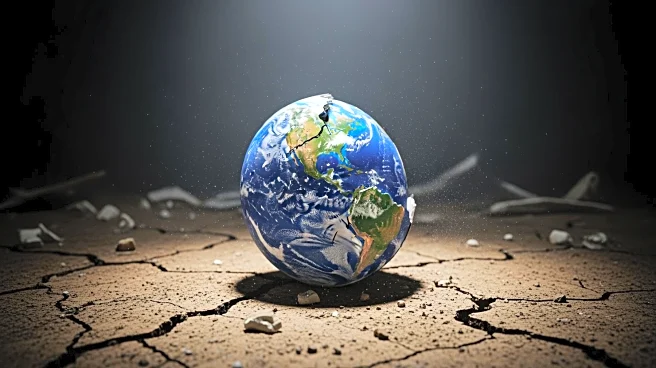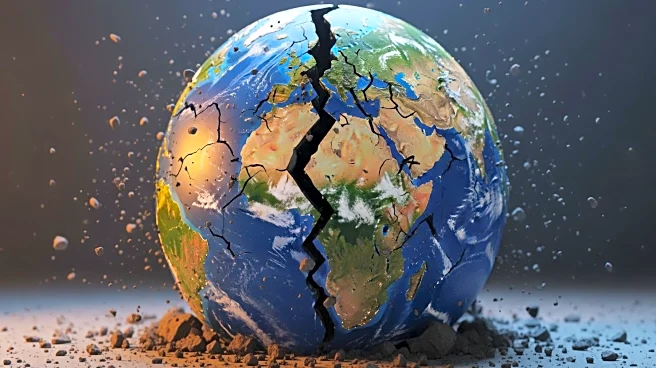What's Happening?
A powerful 6.3 magnitude earthquake has struck northern Afghanistan, resulting in at least 20 deaths and over 640 injuries. The quake's epicenter was near the town of Khulm, where residents are dealing
with the aftermath, including collapsed homes and damaged infrastructure. The historic Blue Mosque in Mazar-e-Sharif sustained damage, though it remains structurally intact. The Afghan government and international organizations are mobilizing to provide aid and assess the full extent of the damage.
Why It's Important?
The earthquake highlights the ongoing vulnerability of Afghanistan to natural disasters, compounded by the country's limited infrastructure and resources. The immediate humanitarian impact is severe, with many residents losing homes and access to basic services. The damage to cultural landmarks like the Blue Mosque also underscores the broader cultural and historical losses that can accompany such disasters. The international community's response will be crucial in providing the necessary support for recovery and rebuilding efforts.
What's Next?
Rescue and emergency teams are actively working in the affected areas to provide medical assistance and support to those displaced by the earthquake. The Afghan government, along with international partners, will likely focus on delivering immediate relief supplies and assessing longer-term reconstruction needs. Continued monitoring of aftershocks and potential further seismic activity will be essential to ensure the safety of residents.
Beyond the Headlines
The earthquake serves as a reminder of the need for improved disaster preparedness and infrastructure resilience in Afghanistan. Long-term strategies may involve strengthening building codes and investing in community-based disaster risk reduction programs to better equip the country to handle future natural disasters.















